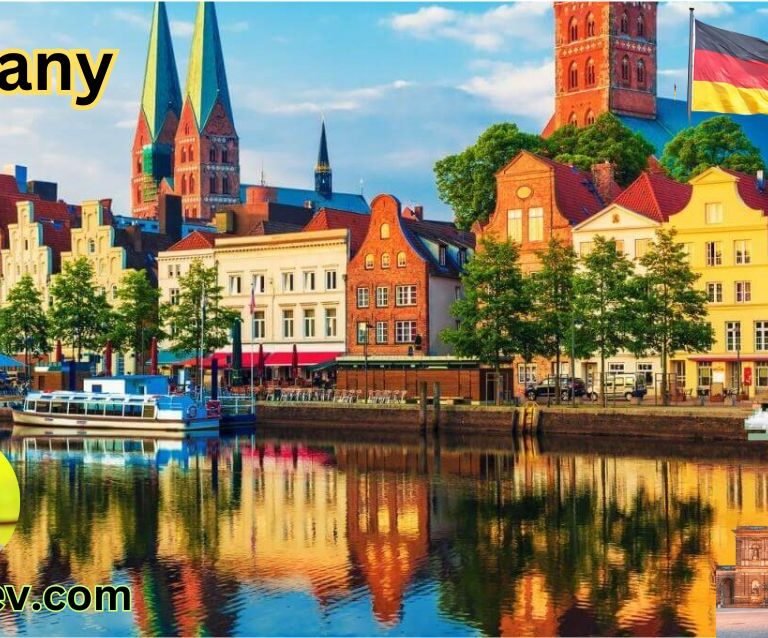Kanyakumari, the southernmost town of India, resides in the state of Tamil Nadu
Kanyakumari, the southernmost town of India, resides in the state of Tamil Nadu. This coastal gem, known for its geographical significance, occupies a unique position where the waters of the Indian Ocean, the Arabian Sea, and the Bay of Bengal converge. Historically referred to as Cape Comorin during the British era, Kanyakumari has long been a point of convergence, not just topographically but culturally and historically as well.
Rich in heritage, Kanyakumari holds a storied past dating back to several dynasties, including the Cholas, Cheras, and Pandyas. It has served as a significant trading and cultural hub, witnessing the ebb and flow of various cultural influences over centuries. This transformation from a historically rich town to a modern-day favorite tourist destination speaks volumes about its enduring charm and captivating allure.
In contemporary times, Kanyakumari is celebrated for the mesmerizing view it offers at sunrise and sunset, a natural phenomenon magnified by its unique geographical location. Tourists flock to witness the spectacular vista where the sky meets the sea, creating a stunning tableau that is unparalleled. The town’s scenic beauty is complemented by its cultural landmarks, such as the Vivekananda Rock Memorial, Thiruvalluvar Statue, and the Kanyakumari Temple, all of which bear testimony to its rich historical and spiritual heritage.
Thus, Kanyakumari stands today as a picturesque destination, luring visitors with its coastal charm and profound historical roots. Whether one is drawn by the allure of its sun-kissed beaches or the depth of its historical insights, Kanyakumari promises a diverse and enriching experience that resonates with both history enthusiasts and nature lovers alike.
Historical Significance and British Era
Kanyakumari, historically known as Cape Comorin, is a region steeped in rich historical and cultural heritage. The town derives its name from the Hindu goddess Kanyakumari, an incarnation of Parvati. However, “Cape Comorin” is a nomenclature given by the British during their colonial rule which began in the early 19th century. It was an era that marked significant transformation and development for this coastal town.
The strategic importance of Kanyakumari was recognized by the British primarily because of its geographical position at the southernmost tip of the Indian peninsula. This unique location made it a crucial point for maritime navigation and trade routes, connecting the Indian Ocean with the Arabian Sea and the Bay of Bengal. The British constructed various administrative buildings, churches, and lighthouses that still stand today as a testament to the architectural advancement during their rule.
Key historical events included the establishment of educational institutions and the integration of modern governance systems, which brought a transformative wave to the socio-economic fabric of the region. The construction of roads and railways enabled better connectivity and played a pivotal role in boosting the local economy. The British also introduced plantation agriculture, particularly rubber and cashew nuts, which became significant contributors to the region’s agrarian landscape.
Kanyakumari’s transformation under the British era is also evident through its urban planning and civic amenities which saw marked improvements during their rule. The establishment of the town as a significant port and its inclusion in the broader colonial trade network enhanced its prominence on the global map. The period heralded a mix of indigenous traditions with colonial influences, resulting in a cultural amalgamation that remains visible to this day.
As centuries have rolled by, Kanyakumari has evolved, shaped by its historical experiences. Although the British have long left, their architectural and infrastructural imprints continue to define parts of this coastal gem. The town’s historical significance remains ever prominent as it continues to be a testament to a shared heritage that intertwines local traditions with foreign influences.
Stunning Sunrises and Sunsets at Kanyakumari
Kanyakumari, the southernmost tip of the Indian peninsula, is famed for its breathtaking sunrises and sunsets. This spectacular phenomenon can be attributed to its unique geographical location where the Bay of Bengal, the Indian Ocean, and the Arabian Sea meet. As the confluence of these waters creates a panoramic view, the sun’s reflection off the oceanic horizon generates vivid displays of color that are nothing short of awe-inspiring.
The prime locations to witness these natural wonders include the Vivekananda Rock Memorial and the Thiruvalluvar Statue, both accessible by ferry and providing an unobstructed view of the horizon. For sunrise enthusiasts, the ideal time to reach these spots is around 5:45 AM to 6:00 AM. As for sunsets, arriving there by 5:30 PM ensures a front-row seat to one of nature’s most mesmerizing spectacles.
One of the visitor-favorite spots is the Kanyakumari Beach. Early risers and evening goers alike gather here, often finding solace in the rhythmic sounds of crashing waves while the sky plays a symphony of changing hues. Another recommended location is the Mahatma Gandhi Mandapam, equally popular for its panoramic views and tranquility.
Capturing the perfect photograph of these moments can be rewarding; hence, it is advisable to bring a good-quality camera and find a vantage point free from crowds. Photographers often suggest using a tripod to ensure stability, especially under low light conditions. Additionally, incorporating local elements like fishing boats or the silhouette of the Vivekananda Rock Memorial can add a unique touch to your captures.
Many visitors have shared their experiences, often describing the sunrises and sunsets at Kanyakumari as a spiritual and profoundly moving experience. The vibrant colors, combined with the serene ambiance, create a captivating spectacle that stays etched in memory long after the visit. Whether you are a nature lover, a photography enthusiast, or someone seeking a moment of peace, Kanyakumari’s sunrises and sunsets offer a visually enriching and soul-stirring experience.
Kanyakumari, a destination known for its coastal charm and historical richness, boasts of numerous sacred locations, among which the Bagavathi Amman Temple stands out prominently. Dedicated to the goddess Kumari Amman, who is revered as a consort of Shiva, this temple is not only a place of profound spiritual significance but also a historical marvel that attracts pilgrims and tourists alike.
Historical Context and Architectural Style
The Bagavathi Amman Temple’s origins trace back to ancient times, with historical references placing its construction at around 3000 years ago. This sacred site has seen numerous renovations throughout the centuries, each adding to its grandeur. The temple exudes a Dravidian architectural style, characterized by its towering gopuram (gateway tower) adorned with intricately carved sculptures and vivid depictions of deities. The main sanctum, where the idol of Kumari Amman resides, showcases the fine artistry and devotion that has been a hallmark of South Indian temple architecture.
The Deity and Cultural Importance
Kumari Amman, the presiding deity of the Bagavathi Amman Temple, holds immense significance in the local culture. According to legend, she is an eternal virgin goddess who undertook severe penance to marry Lord Shiva. However, fate had other plans, and the mythological narrative encapsulates themes of unwavering devotion and sacrifice. This myth not only enriches the cultural tapestry of Kanyakumari but also endows the temple with a deeply spiritual aura, making it a site of worship and reverence for devotees.
Rituals and Festivals
The temple’s daily rituals and practices form the core of its spiritual activities. The main pujas, conducted at precise timings, attract numerous devotees seeking blessings. One of the most notable festivals celebrated here is the Navaratri festival, which spans nine nights and is marked by elaborate ceremonies, traditional music, and dance performances, honoring the goddess in her diverse forms.
Pilgrims visiting the Bagavathi Amman Temple can expect a journey that is both spiritually uplifting and culturally enriching. From witnessing intricate rituals to participating in grand festivals to simply soaking in the serene and sacred atmosphere, the temple offers a myriad of profound experiences. The Bagavathi Amman Temple, with its combination of historical, cultural, and spiritual elements, remains a pivotal site in understanding the rich legacy of Kanyakumari.
Our Lady of Ransom Church: The Heart of Indian Catholicism
Situated at the southern tip of India, Our Lady of Ransom Church stands as a monumental beacon of Indian Catholicism. This revered structure, known for its profound religious and cultural significance, attracts both devotees and tourists alike. Dating back to the early 20th century, the church was constructed to honor the Virgin Mary, the patroness of the Catholic diocese in Kanyakumari. The church takes its name from the medieval devotion to Our Lady of Ransom, focusing on the redemption of slaves and prisoners, symbolizing spiritual liberation.
The architectural grandeur of Our Lady of Ransom Church is mesmerizing. Characterized by its neo-Gothic style, the cathedral features stunning white facades, sharp spires piercing the sky, and intricate stained-glass windows that depict various biblical scenes. The interior is equally captivating, with serene altars and religious iconography that foster a deep sense of reverence and devotion. This architectural marvel isn’t just a visual delight but a reflection of the historical amalgamation of indigenous styles with European influences.
Our Lady of Ransom Church is more than just a historical edifice; it is a pivotal spiritual haven for the Catholic community in Kanyakumari. The church is an active center for religious activities, hosting key events such as the annual feast of Our Lady of Ransom, which draws thousands of participants in a grand display of faith and festivity. Regular services, including daily masses and special ceremonies, offer spiritual solace and communal bonding for the local and visiting Catholics.
In essence, Our Lady of Ransom Church is central to the fabric of Kanyakumari’s religious and cultural landscape. It stands not only as a testament to the architectural ingenuity but also as a lighthouse of faith, embodying the deep-rooted Catholic heritage within the region. Whether one visits for spiritual enrichment or architectural admiration, the experience is invariably enriching, echoing the enduring legacy of Indian Catholicism in Kanyakumari.
Other Attractions and Activities in Kanyakumari
Beyond its scenic beaches and spiritual significance, Kanyakumari is home to several captivating attractions that draw visitors from around the world. One of the most remarkable landmarks is the Vivekananda Rock Memorial, a monument perched on a rocky island off the coast. Dedicated to the revered Indian spiritual leader Swami Vivekananda, this site offers a serene and reflective space. The memorial is accessible by a short ferry ride, and it provides panoramic views of the Indian Ocean, Arabian Sea, and the Bay of Bengal.
Another iconic structure that graces the Kanyakumari skyline is the Thiruvalluvar Statue. This imposing 133-foot tall stone sculpture commemorates the celebrated Tamil poet and philosopher Thiruvalluvar. The statue’s height symbolizes the 133 chapters of his magnum opus, the Thirukkural. Both the Vivekananda Memorial and the Thiruvalluvar Statue are significant symbols of India’s rich cultural heritage and philosophical depth.
The Gandhi Memorial Mandapam stands as a tribute to Mahatma Gandhi, where some of his ashes were kept before immersion. Designed to allow sunlight to fall on the exact spot where the ashes were kept, the architecture of this memorial is an epitome of simplicity blended with profound symbolism. This site is a must-visit for those interested in India’s history and the life of Gandhi.
Kanyakumari’s allure extends beyond historical monuments. The local markets are vibrant hubs where you can experience the region’s culture through its myriad handicrafts, spices, and textiles. Beach outings at the picturesque Kanyakumari Beach and watching the mesmerizing sunrise and sunset are activities that should not be missed.
For those seeking lesser-known spots, the Suchindram Temple and the Padmanabhapuram Palace offer rich historical insights and architectural splendor. Suchindram Temple, with its unique musical pillars, and Padmanabhapuram Palace, known for its intricate woodwork, both provide a peek into the region’s architectural and cultural legacy.
Overall, Kanyakumari presents a blend of natural beauty, spiritual experiences, and historical wonders, making it a destination that offers a diverse array of activities for every traveler.
Tips for Travelers Visiting Kanyakumari
When planning a trip to Kanyakumari, it’s essential to consider the timing of your visit. The period from October to March is ideal, as the weather is pleasant and conducive for sightseeing and other activities. Traveling off-season, especially during the summer months of April to June, can be challenging due to the intense heat. Meanwhile, the monsoon season, from July to September, brings heavy rains that might restrict outdoor activities.
Travel options to Kanyakumari are diverse. The nearest airport is Trivandrum International Airport, approximately 90 kilometers away, offering convenient connectivity by air. For those traveling by train, the Kanyakumari Railway Station is well-linked with major cities across India. Additionally, well-maintained roadways make it accessible by bus or car, with options ranging from luxurious to economical.
Accommodation choices in Kanyakumari cater to various preferences and budgets. From luxury hotels like Sparsa Resort and Hotel Sea Face to budget-friendly options such as Hotel Seaforth and Hotel Sea View, there is something for everyone. Booking in advance, especially during peak tourist seasons, is highly recommended.
Dining in Kanyakumari offers a delightful experience, with numerous restaurants serving an array of local and international cuisines. Eateries like Triveni Restaurant and Le Arabia Seafood Restaurant are popular for their authentic flavors and variety. It is advisable to try the local South Indian specialties for a genuine culinary experience.
Understanding and respecting local customs is crucial while visiting Kanyakumari. Dress modestly, especially when visiting temples and religious sites. Additionally, learning a few basic phrases in Tamil, though not mandatory, can significantly enrich your interactions with the locals.
For a safe and enjoyable trip, travelers should practice general safety measures. Keep your valuables secured, stay aware of your surroundings, and follow health guidelines to ensure a hassle-free experience. Engaging with local guides can also offer insightful perspectives and enhance your visit.
Lastly, make sure to plan your itinerary to maximize your time. Ensure you visit top attractions like the Vivekananda Rock Memorial, Thiruvalluvar Statue, and Kanyakumari Beach. Embracing the local culture and natural beauty will undoubtedly make your visit to Kanyakumari memorable.
The Enchanting Allure of Kanyakumari
Kanyakumari stands as an epitome of multifaceted appeal, harmoniously blending natural beauty, cultural richness, and historical depth. This coastal town, perched at the southernmost tip of India, offers an extraordinary spectacle where three seas – the Arabian Sea, the Indian Ocean, and the Bay of Bengal – converge. The spectacular sunrises and sunsets viewed from this unique geographical point are nothing short of mesmerizing and provide a serene escape from the bustle of city life.
For those inclined towards spiritual enrichment, Kanyakumari houses some of the country’s most revered temples and monuments. The Vivekananda Rock Memorial and Thiruvalluvar Statue, standing stoically against the backdrop of the azure sea, are not just architectural marvels but also symbols of philosophical and literary heritage. Pilgrims and tourists alike find solace and inspiration in these timeless monuments.
History enthusiasts will find Kanyakumari brimming with intriguing tales and landmarks. The town’s storied past, from its significance in ancient seafaring routes to its role in India’s spiritual and cultural narratives, offers a rich tapestry for exploration. The Forts, museums, and churches here tell fascinating stories, each a chapter in the diverse history of this coastal gem.
In essence, Kanyakumari is more than just a geographic point; it is a confluence of nature, spirituality, and history. Whether you are an avid traveler, a spiritual seeker, or a history buff, Kanyakumari promises an unforgettable experience. Its captivating charm lies in its ability to offer something profound to every visitor. Embark on a journey to Kanyakumari and immerse yourself in its multifaceted beauty and historical richness. Let the coastal air and the whispers of history rejuvenate your spirit and leave you with memories that will last a lifetime.








